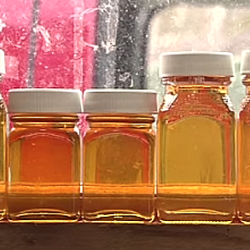Source Institutions
Source Institutions
Add to list Go to activity
Activity link broken? See if it's at the internet archive

In this activity, learners use household materials to investigate and explore their ability to smell an odor. Learners compare and contrast results to determine if some individuals have a better sense of smell than others. Learners also observe the Maillard reaction and how different odor molecules are released into the air. Note: Since experiment #2 requires the use of a hot stove and skillet, we recommend that an adult conducts it as a demonstration, or that the appropriate safety materials are used and safety guidelines are discussed prior to the experiment.
- Under 5 minutes
- 45 to 60 minutes
- Over $20 per group of students
- Ages 11 - 14
- Activity, Experiment/Lab Activity, Lesson/Lesson Plan
- English
Quick Guide
Materials List (per group of students)
- Plastic cups
- Measuring cups and spoons
- Vinegar
- Coffee beans
- Pitcher of water
- Non-stick skillet
- Corn syrup
- Amino acid capsules
- Permanent markers
- Oven mitts or gloves
- Stove or hot plate
- Data table (optional)
Subjects
-
Life Sciences
-
Human Body
- The Brain and Nervous System
-
Human Senses and Perception
- Taste
- Smell
-
Human Body
-
Physical Sciences
- Chemistry
- Structure and Properties of Matter
-
The Nature of Science
-
The Scientific Process
- Conducting Investigations
- Formulating Explanations
- Communicating Results
-
The Scientific Process
Informal Categories
- Food and Cooking
Audience
To use this activity, learners need to:
- see
- read
- smell
Learning styles supported:
- Involves hands-on or lab activities
Other
Includes alignment to state and/or national standards:
This resource is part of:
Access Rights:
- Free access
By:
- Education, Science Friday
Rights:
- All rights reserved, Science Friday, 2011
